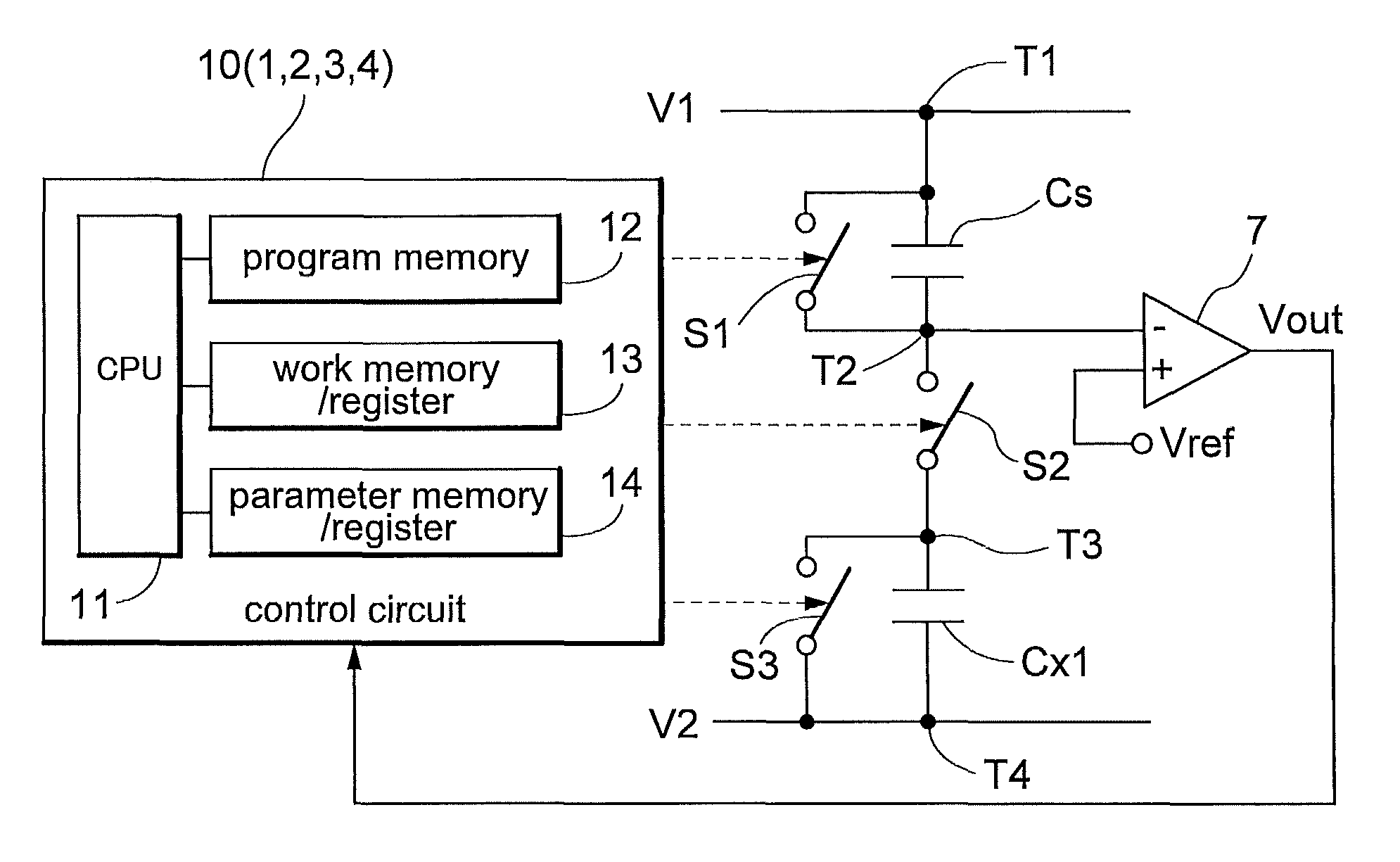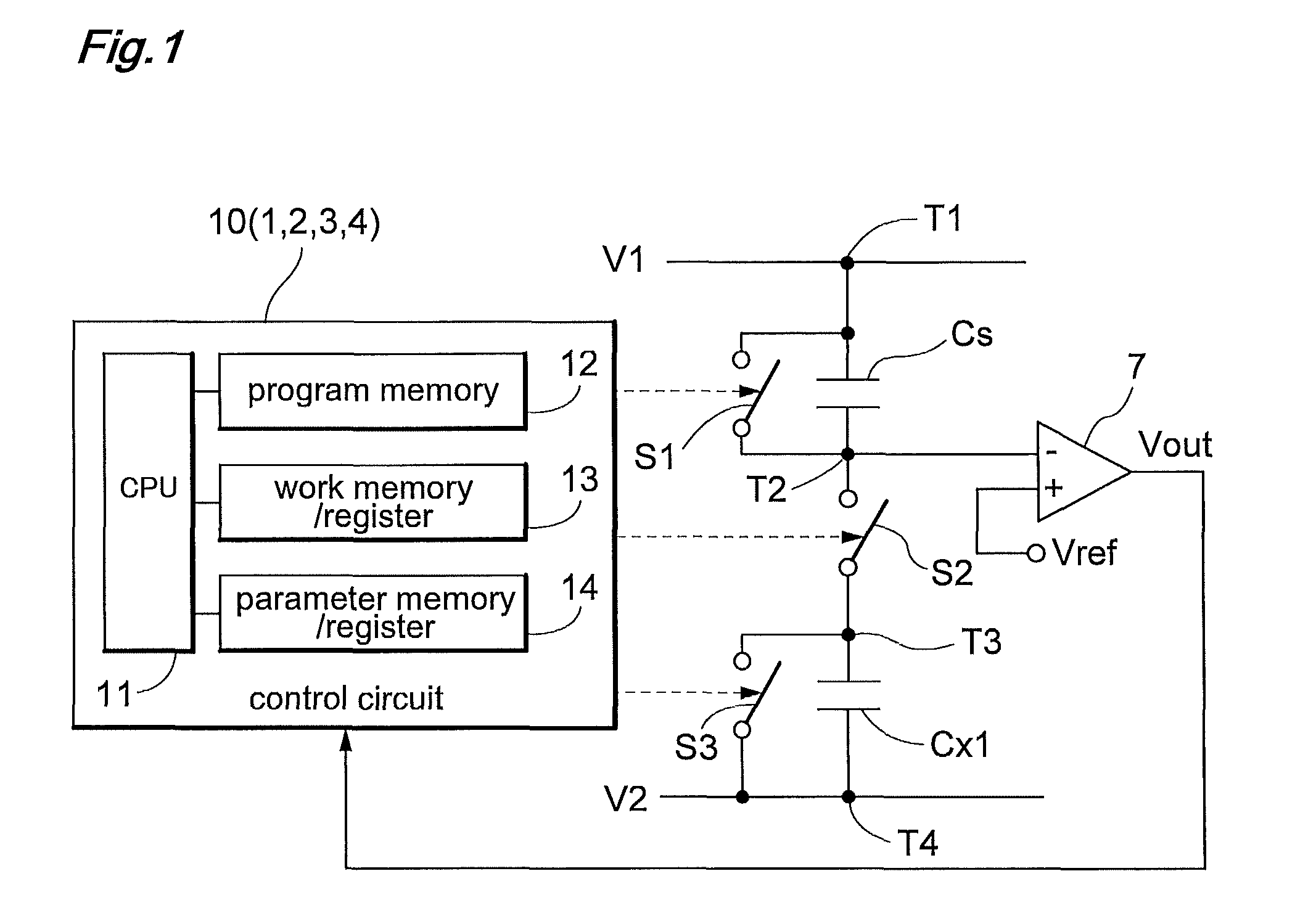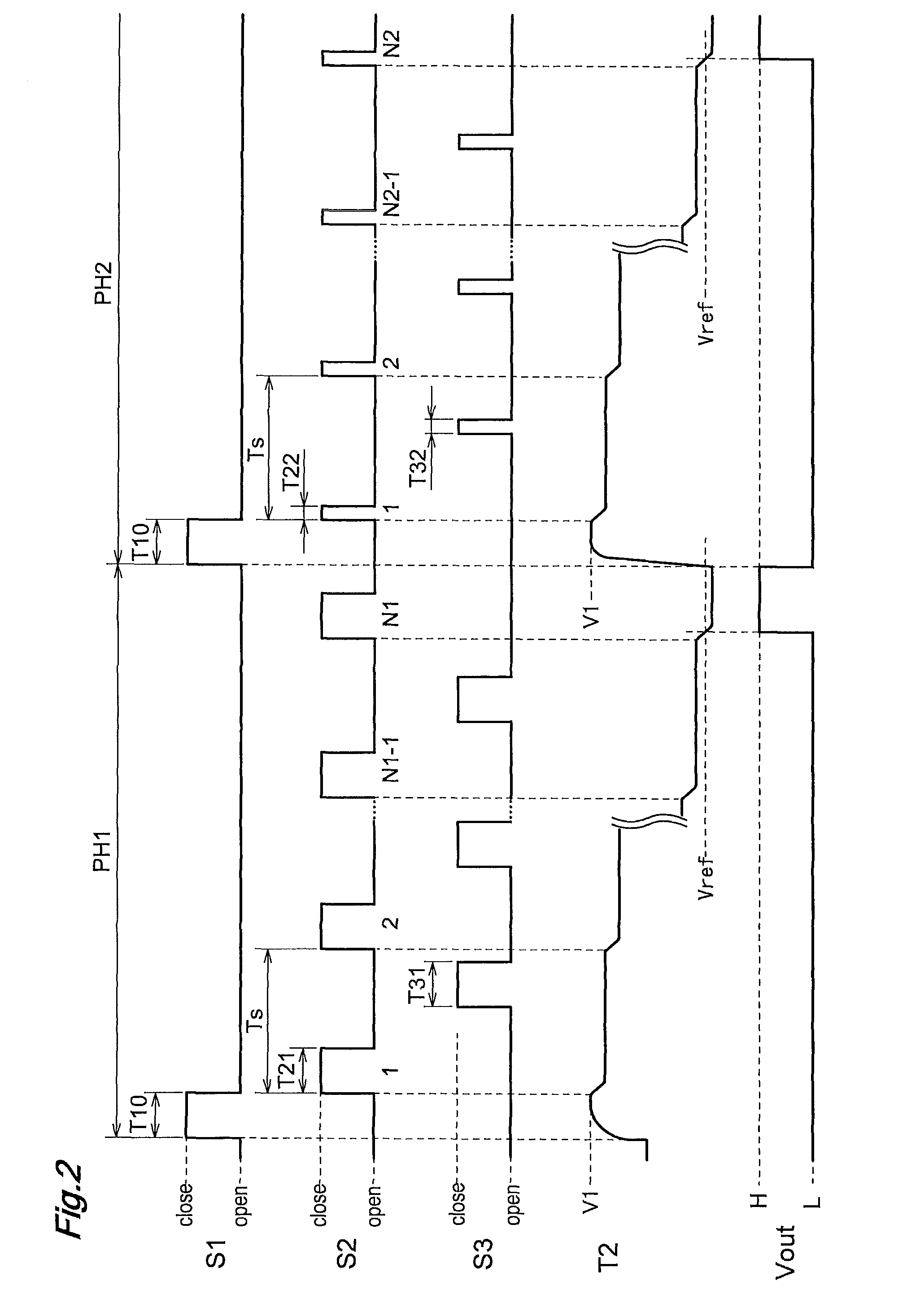[0019]The present inventors focused attention on the fact that the measured capacitance changes with different time constants between the case of e.g. a human's touching or contacting to a machine or device mounting the capacitance detection apparatus and the case of adherence of water drops or the like thereto. Then, based on this finding, the inventors set two kinds of closing periods for the second switch. With this, in accordance with two kinds of closing periods of the second switch, two kinds of switching control processes are executed and the number of repetition times of the second switch operation is counted in each control process. For instance, if the time constant is short, the number of the repetition times in the first switching control process and that in the second switching control process will be similar to each other, irrespective of the closing period of the second switch. On the other hand, in case the time constant is long, there is high possibility of the number of the repetition times in the first switching control process and that in the second switching control process being distinctly different in correspondence with the closing period of the second switch operation. Therefore, through comparison between the number of the repetition times in the first switching control process and that in the second switching control process, determination of what kind of event has occurred can be executed with accuracy. Further, based upon the numbers of repetition times, it is also possible to determine whether change has occurred in the measured capacitance or not. Therefore, according to the above-described arrangement of the present invention, it is possible to determine whether change has occurred in the measured capacitance or not and to determine also whether the event that caused the change is an event of detection interest or not. As a result, there has been realized a capacitance detection apparatus capable of effectively discriminating between an external factor due to e.g. water drops and a human-induced operation and allowing detection of occurrence of the human-induced operation with a simple arrangement.
[0024]The change amount calculating unit calculates change amounts which are the differences between the numbers of the repetition times of the second switch operations executed in two consecutively executed first switching control processes and two consecutively executed second switching control processes, respectively. As described above, the output determining unit determines presence / absence of change in the capacitance of the measured capacitance, based upon at least one of the numbers of repetition times in the first switching control process and the second switching control process. However, these numbers of repetition times are subject to such influences as the ambient temperature. On the other hand, the change amount above is a difference between the numbers of repetition times of the second switch operation executed under substantially same condition of ambient environment such as ambient temperature. Therefore, the influence from the ambient environment is substantially negligible. Hence, if the output determining unit determines presence / absence of change in the capacitance value of the measured capacitance based on at least one of the change amounts of the first switching control process and the second switching control process, determination with higher precision becomes possible. Similarly, the determination as to what event has occurred can be executed with high precision.
[0026]The change in capacitance per unit period in the case of occurrence of an event of a long time constant is smaller than that in the case of occurrence of event of a short time constant. In other words, in the changes in the capacitance per first and second charging period, the change in the case of occurrence of event of long time constant is smaller than the change in the case of occurrence of event of short time constant. For this reason, in the case of occurrence of event of a long time constant, the change amount in the number of repetition times of the second switch operation is smaller. If the charging period which is the closing period of the second switch is short, the change in the capacitance will be even smaller in the case of an event of long time constant, so that the change amount in the number of repetition times of the second switch operation will be even smaller, as well. Accordingly, by determining presence / absence of change in the capacitance value of the measured capacitance based on the change amount in the one wherein the second switch operation is executed with the shorter charging period, an event having a long time constant, if occurred, can be treated as non-detection. For instance, in comparison between the case of human's touching or approaching to the apparatus mounting the capacitance detection apparatus and the case of water drops or the like adhering thereto, the time constant is longer in the latter case of adhering of water drops or the like to the apparatus. That is, if there has occurred an event of a long time constant, there is high likelihood of this event being adherence of water drops or the like to the apparatus. Therefore, by setting more strict determination criteria for the presence / absence of change in capacitance, in addition to the execution of the event determination, the detection precision of event can be improved.
[0028]As described above, the output determining unit is capable of effectively determining what kind of event has occurred, by comparing the numbers of repetition times or change amounts in the first switching control process and the second switching control process. If the difference is employed as the method of this comparison, the determination can be made simple. Whereas, if the ratio is employed as the method of this comparison, the determination will have higher resistance against change in the ambient environment, so that determination with even higher precision will become possible.
 Login to View More
Login to View More  Login to View More
Login to View More 


